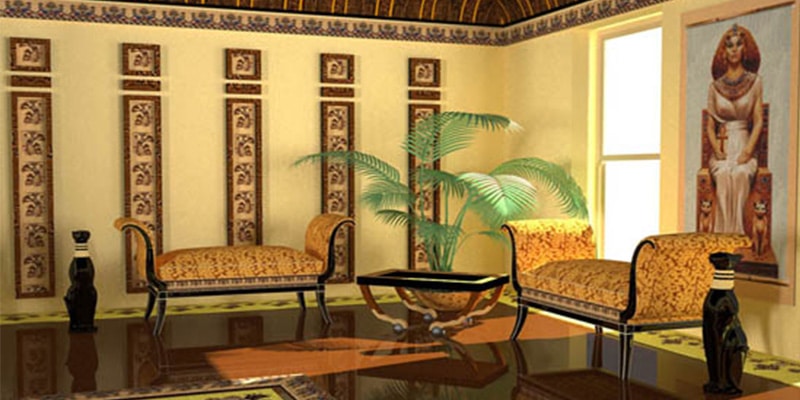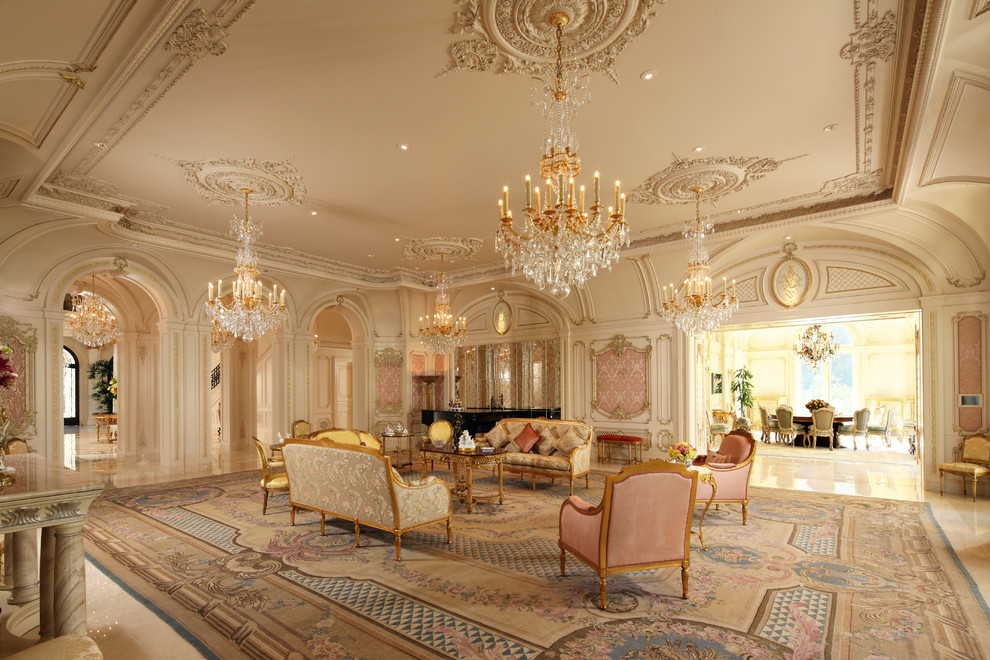History of interior design
Interior design refers to the process of improving the interior of a structure in order to create a more attractive and healthier environment. This involves utilizing both artistic and scientific principles to achieve an aesthetically pleasing space that is conducive to well-being. The history of interior design can be traced back to the beginning of human civilization when people started creating shelter and improving the interiors of their homes for comfort and aesthetics. View more about wall arts on throughourlens.
Ancient Times

source: pinterest.com
In ancient times, interior design was heavily influenced by the cultural and artistic traditions of the time, as well as the materials and technologies available. Here are a few examples of interior design in ancient times:
Ancient Egypt: Known for their opulent and ornate interiors. They used a lot of color, including gold, blue, and red, and decorated walls and furniture with intricate hieroglyphics and other symbolic imagery. Furniture was often made of wood and covered in linen or leather, and rooms were arranged around courtyards and gardens.
Ancient Greece: They valued simplicity and balance in their interior design. They used white or pastel colors and simple, clean lines, and often incorporated columns and other architectural elements into their interiors.
Ancient Rome: Like the Greeks, the ancient Romans favored simplicity and balance in their interior design. They often used marble and other stone materials, as well as rich fabrics like silk and velvet.
Ancient China: Heavily influenced by the principles of feng shui, which aimed to create a harmonious and balanced living space. Furniture was often made of wood and decorated with intricate carvings and paintings, and textiles like silk and brocade were used to add color and texture.
Ancient India: Influenced by religion and spirituality. Homes and public spaces were decorated with intricate carvings and sculptures of deities and other religious figures, and textiles like silk and cotton were used to create vibrant, colorful interiors.
Medieval Period

source: pinterest.com
In the Middle Ages, interior design was heavily influenced by the Christian church. Gothic architecture and art were prominent, and interiors featured high vaulted ceilings, stained glass windows, and richly decorated altarpieces. Furniture was often simple and utilitarian, and tapestries and carpets were used to add warmth and color.
Renaissance
The Renaissance period was characterized by a renewed interest in classical art and culture. Interiors were decorated with classical motifs, such as columns and arches, and furniture was often ornate and carved. Tapestry, silk, and velvet were popular textiles, and colors were rich and vibrant.
Baroque

source: pinterest.com
The Baroque period was characterized by elaborate decoration and a sense of drama. Interiors featured ornate plasterwork, heavy drapes, and richly decorated furniture. Gold leaf was a popular decorative element, and mirrors were often used to reflect light and create the illusion of spaciousness.
Rococo
The Rococo period was a more whimsical and light-hearted style, characterized by pastel colors, curving lines, and delicate ornamentation. Interiors were decorated with floral motifs, and furniture was often covered in silk and lace. Mirrors were also popular, as were chandeliers and candlesticks.
Neoclassical

source: pinterest.com
The Neoclassical period was a return to the classical style of ancient Greece and Rome, characterized by simple lines and classical motifs. Interiors featured white or light-colored walls, and furniture was often made of mahogany or other dark woods. Textiles were simple and understated, and ornamentation was kept to a minimum.
Art Nouveau
The Art Nouveau period was a reaction against the ornate styles of the past, characterized by flowing lines, floral motifs, and a sense of organic unity. Interiors featured curved lines and sinuous forms, and furniture was often made of bentwood. Colors were muted and earthy, and stained glass was a popular decorative element.
Modernism

source: pinterest.com
The Modernist period was characterized by a focus on simplicity and functionality. The interiors displayed a simple and uncluttered appearance with the use of straight and angular shapes and a minimal amount of decorative elements. Furnishings were frequently constructed from metal and glass materials, and the color palette was typically subdued and consisted of shades from a single color family.
Postmodernism
The Postmodern period was a reaction against the austere style of Modernism, characterized by a playful and eclectic mix of styles and motifs. Interiors featured a mix of traditional and contemporary elements, and colors were bold and bright. Furniture was often sculptural and artistic, and postmodern designers often incorporated humor and irony into their work.
In the present day, interior design is a combination of styles, techniques, and materials from different periods and cultures, with a growing focus on sustainability, wellness, and technology.



